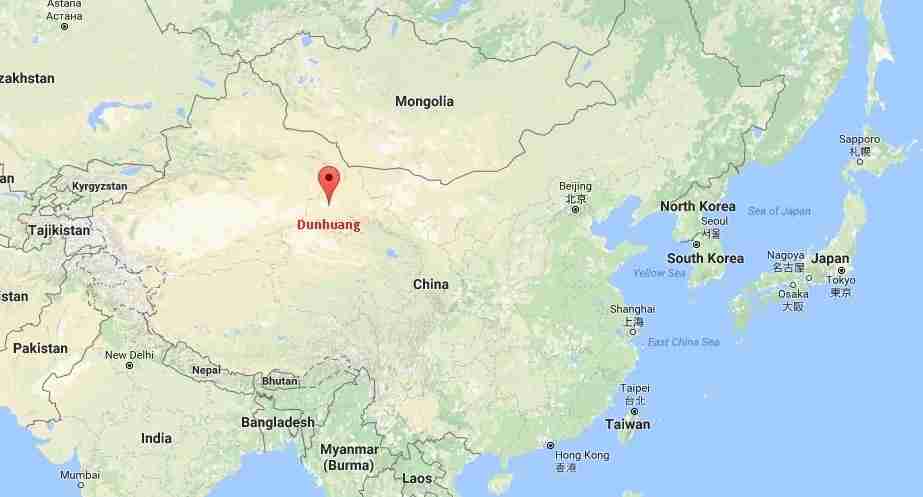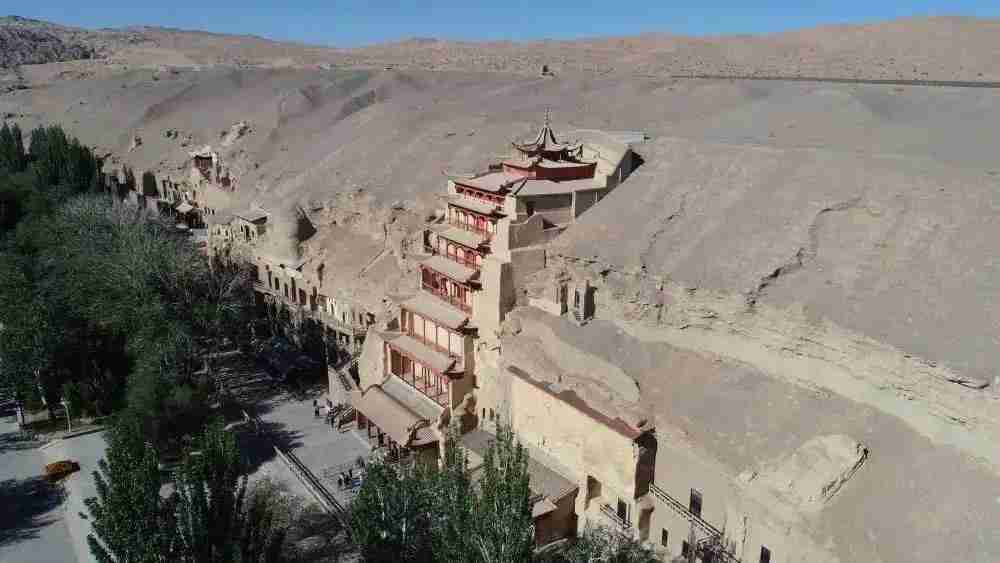Dunhuang is a city famous for its historic values that can be attributed to its ancient caves. Its location was very important for traders from the east and west sides of China.
Where is Dunhuang located?

Dunhuang is located on the Old Silk Road in the northwestern Gansu province. This county-level city is on an oasis harboring the Crescent lake and the Singing sand mountain at the edge of the Gobi Desert. It is situated on the route leading to the ancient cities of Chang’an and Luoyang. The Old silk route linked China to India via Mongolia and modern-day Siberia.
What were the Dunhuang caves?
Dunhuang has over 500 caves carved on the cliff above the Dachuan River. Many artifacts were found in these caves. These artifacts were from different eras and were also in different caves. For instance, there was a Library cave that housed thousands of ancient manuscripts and relics. Cave 156 showcased a line of warriors from the Tang dynasty while cave 23 showed workers of the same dynasty in a field. Cave 302 is of the Sui dynasty and showcased cultural exchanges along the old silk road. These caves became known as Mogao caves.
Mogao caves in Dunhuang(Mogao grottoes)

Mogao caves are located 25kms from Dunhuang city. They are also known as the thousand Buddha caves and housed great treasures and rare Buddhist relics. There are statues as high as 33 meters, painted murals, painted clay figures, and ancient silk embroidery. There are also many manuscripts in different native languages like Tibetan language and Sanskrit. The artifacts show the cultural exchanges between eastern and western parts of Asia with influence from as far as Europe. Their discovery is termed as one of the world’s greatest oriental cultural discoveries.
What were the Mogao caves used for
Mogao caves were majorly used as a place of worship and pilgrimage. It was used by monks to cultivate and meditate on their travels through Dunhuang. Since the area was clean and free from external secular interference, monks made the Mogao grottoes a center for Buddhism. Many temples were set up here and the caves were used to translate Buddhist scriptures.
Why were the Mogao caves built?
Mogao caves were built when a monk visiting Dunhuang visited the Singing sand mountain one evening a saw the sun strike the of the mountain and form a thousand images of Buddha. This was the era Buddhism was spreading and the fast cave was carved in symbolism with a thousand images of Buddha. More caves were built to serve as temples and places of worship.
Why are the Mogao caves important
Mogao Caves are important for their historical value. There are over 500 caves that hold extensive artifacts that tell the ancient story. The geographical position of the Mogao caves made it possible to be a hub for merchants, religious influence, and cultural exchange in ancient times. This cave hosts some very valued manuscripts that are thousands of years old.
There are over 40,000 scrolls that show clear recordings of the trade and the importance of the old silk road. There are scrolls about the woodblock printing technique that originated in china in the 8th century. One of the most iconic ancient texts known as the Diamond Sutra was found in the library cave and was made using the woodblock technique. In addition to these scrolls, literature that has shed light on early eastern Christianity, Daoist, and Jewish documents have also been discovered in these caves.
These caves give a great deal of information about economics and trade between the east and the west. As Dunhuang is located at the road interchange on the southern silk route and the main road heading to Mongolia and Siberia, it was a very useful stopover for traders from the east and the west. The caves documents largely about the trade which was imports and exports into China. This has offered great help in the study of ancient economics in the region and China at large. The traders also exchanged a lot of literature which was found in the library cave and has helped in the study of ancient culture and the evolution of the Chinese culture. It is also worth mentioning that these caves being a Buddhist hub played a major role in the spread of Buddhism as monks would preach when they stopped over for their cultivation.
In the modern-day, Mogao caves have seen Dunhuang spur growth in trade as it is a major tourist town which means beneficial economically. The Great Wall of China was extended to Dunhuang and this added to the city being a desirable tourist destination.
When were the Mogao caves built?
The first Mogao cave was carved in the year 366 AD. This was in the pre-Qin period in the second year of Jianyuan. The rest of the caves were built in the coming years lasting through 10 dynasties. It took more than 1000 years to build all the caves.
Who built the Mogao caves?
The first Mogao cave was built by a monk who sighted a sunray that appeared to be a thousand images of Buddha, to respect Buddha. The other caves were built with the help of three forces. There was the benefactor, the cave owner, and the builders. Benefactors would provide the monetary assistance required by the cave owner. The cave owners would contract the builders and oversee the works being carried out. When a cave was finished, murals of the owner and benefactor would be painted to mark the cave. The cave builders were never recorded anywhere.
Conclusion
We can see the importance of Mogao caves in the historic evidence they carry. Their beauty to date is a marvel and attracts many tourists and historians to Dunhuang. They are deep in information about ancient times on matters concerning culture, early Buddhism, early Christianity in China, and also the importance of the old silk road.